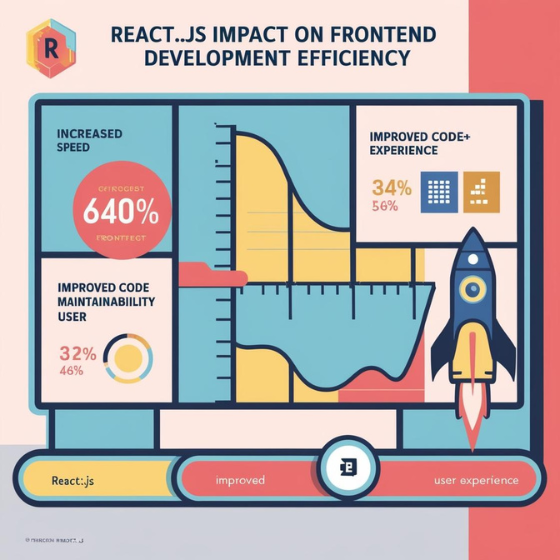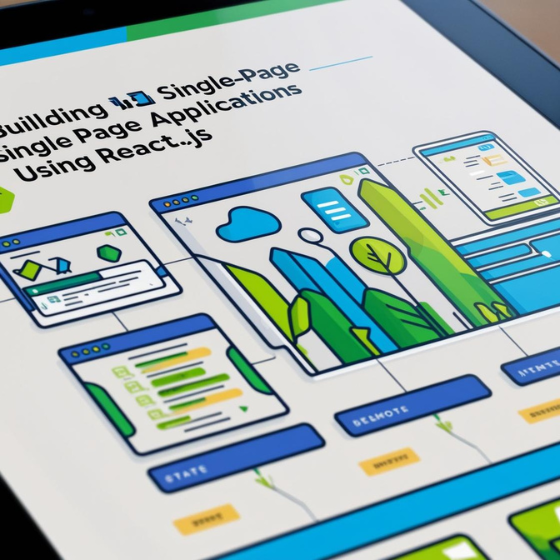How to Develop Reusable Components with React.js
Introduction:
In today’s fast-paced world of web development, efficiency is key. As developers, we strive to write clean, maintainable code that can scale with the growing needs of our applications. One of the best practices to achieve this is creating reusable components. React.js, a popular JavaScript library, offers a component-based architecture that makes building reusable UI components straightforward and efficient.
But how exactly can you develop reusable components with React.js, and why is it so crucial for your projects? In this blog, we’ll walk you through the importance of reusable components, best practices for developing them, and how this approach can save you time, effort, and resources while enhancing your app’s scalability.
Why Reusable Components Are Essential in React Development
Before we dive into the technicalities, let’s first understand why reusability is such an important concept in React development.
- Code Efficiency: Reusing components allows you to avoid writing redundant code, reducing the overall development time and effort. By creating reusable components, developers can use them across different parts of the application without reworking the same functionality.
- Consistency: When you develop reusable components, you’re ensuring that elements like buttons, cards, and forms look and behave consistently throughout your app. This uniformity improves the user experience and makes your application easier to navigate.
- Maintainability: With reusable components, any change made to a single component is reflected across all instances in the app, making updates and bug fixes far simpler. This significantly reduces the risk of errors and helps maintain a high-quality codebase.
- Scalability: Reusable components allow your application to scale effortlessly. As your app grows, you can quickly build new features by reusing and composing pre-existing components, ensuring that your application architecture remains manageable and efficient.
Best Practices for Developing Reusable Components with React.js
Developing reusable components isn’t just about writing generic code. To truly harness the power of React’s component-based structure, there are some key practices to follow.
1. Focus on Component Modularity
The first principle to embrace is modularity. Each component should have one primary responsibility and be as self-contained as possible. Avoid creating “kitchen-sink” components that try to do too much. Instead, break down complex UIs into smaller, manageable pieces.
For example, instead of designing a massive “Form” component that handles all form inputs, validation, and submission logic, break it down into smaller components like TextInput, SubmitButton, and ErrorMessage.
2. Make Components Configurable
Reusable components should be flexible and adaptable to different scenarios. You can achieve this by passing props to your components that dictate their behavior or appearance. A button component can be reused with different styles, labels, and functions depending on the context in which it is used.
For instance, a Button component could be designed to accept props for the button label, size, color, and click handler, ensuring it works across various scenarios without needing to modify its core structure.
3. Use State and Props Wisely
In React, the concept of state and props is central to building reusable components. While props are used to pass data to a component, state is used for managing the component’s internal data. When building reusable components, try to keep them as stateless as possible, using props to pass data and functions down to child components.
However, if state management is necessary, use React’s hooks like useState and useEffect to encapsulate the logic and maintain the component’s reusability.
4. Optimize for Performance
Reusable components should also be performance-optimized. React offers tools like memoization to prevent unnecessary re-renders of components when props or state haven’t changed. For highly reusable components, consider using React.memo to ensure that they only re-render when absolutely necessary, thereby improving performance.
5. Use Prop-Types for Validation
To make sure that components receive the correct data, use PropTypes or TypeScript for type-checking. This helps catch bugs early and ensures that components are always receiving the expected data, making them easier to maintain and reuse.
How to Structure Reusable Components
When designing reusable components, it’s important to follow a logical structure to ensure scalability and clarity. Below are some approaches to structuring your components for maximum reuse:
1. Container and Presentational Components
One effective way to structure components is by separating them into container components and presentational components.
- Container Components: These are responsible for managing state and logic. They fetch data from APIs or manage form submission logic. Container components do not concern themselves with how the UI looks.
- Presentational Components: These are focused purely on how things look. They receive data and functions as props from container components and return the UI to be displayed.
This approach keeps the logic and presentation separate, making components more modular and reusable in different contexts.
2. Reusable Hooks
Another way to create reusable components is by extracting common logic into custom React hooks. Custom hooks allow you to reuse logic across components without duplicating code, making your application more maintainable.
For example, if you have several components that need to fetch data from an API, you can create a custom hook like useFetchData() and reuse it in any component that needs to perform an API call.
Examples of Reusable Components in Real-World Applications
In a real-world application, reusable components often include UI elements such as:
- Buttons: Instead of creating multiple button components throughout the application, you can create a generic
Buttoncomponent that accepts props for different sizes, colors, and actions. - Forms: A reusable
Formcomponent can be built that dynamically renders form fields based on an array of data. This makes it easy to create different forms with varying field types and validation rules. - Cards: A
Cardcomponent can be reused to display information in a uniform format, whether it’s a user profile, a product listing, or an article preview.
By focusing on building modular, configurable components, you can create an efficient UI framework that reduces development time and increases consistency across your app.
How Sodio Can Help You Build Reusable Components
At Sodio, we specialize in creating high-performance, scalable web applications using React.js. If you’re looking to streamline your development process and create reusable components for your application, our expert team is here to help.
We offer:
- React.js development services
- Component-based UI design
- Performance optimization for reusable components
- Custom React solutions tailored to your needs
Contact Sodio today to discuss how we can assist you in building reusable, efficient components for your next project.
Conclusion
Developing reusable components with React.js is an essential skill for modern web development. It improves code efficiency, ensures consistency, and makes your applications easier to maintain and scale. By following best practices such as keeping components small, configurable, and performance-optimized, you can maximize the benefits of React’s component-based architecture.
Ready to take your React development to the next level? Get in touch with Sodio today and let us help you build efficient, reusable components for your next project.







